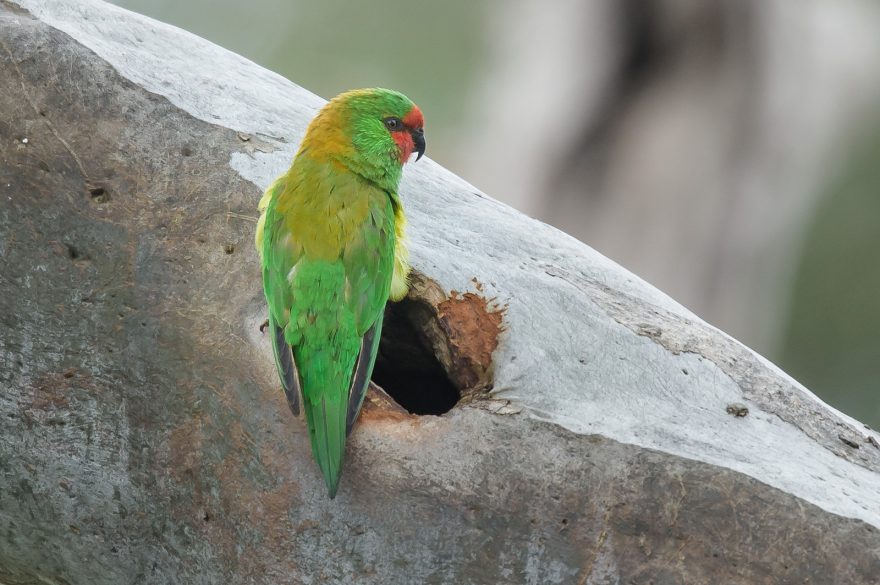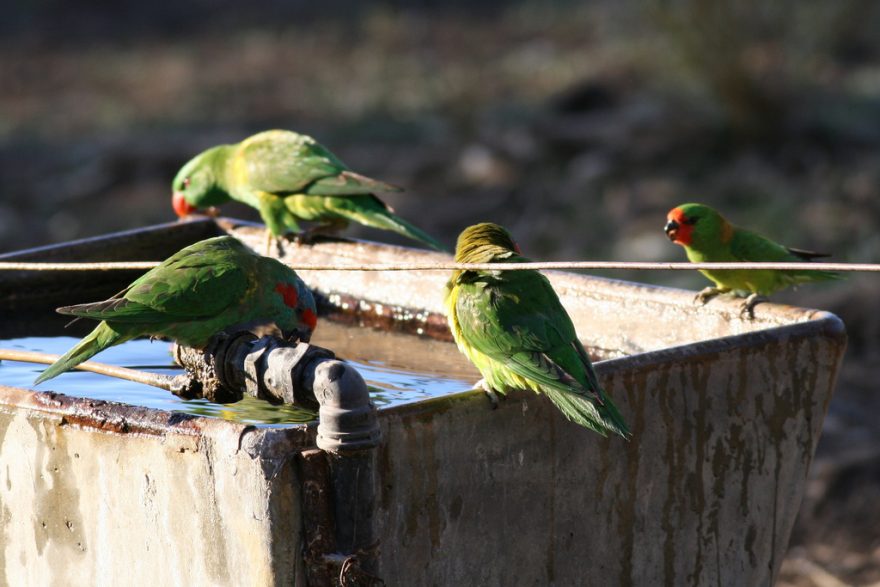The Little Lorikeet is the smallest of Australia’s lorikeet species, found in forests the eastern and southeastern pasts of the country. Though they were exported to Europe in the late nineteenth century, few are found in captivity outside of Australia. Even among Australian breeders, they are kept in very small numbers due to a reputation for being challenging to keep and breed. They make good pets, but larger lorikeets are preferred because of their superior intelligence and hardiness.

Diet & Feeding
Lorikeets possess a brush tipped tongue which is used to extract nectar and pollen from flowering trees. In captivity; a commercial lorikeet mix and a variety of fruit and vegetables is acceptable. Apple, pear, grapes, tomato and strawberries are particularly enjoyed.
Commercial lorikeet mixes can often be fed dry (in powder form) or wet (mixed with water). Dry food and fresh water should be available at all times, as wet lorikeet food spoils quickly and needs to be replaced several times a day – especially in hot weather.
Lorikeets should not be permitted to consume seed, as it can damage the brush tip on their tongue and contribute to a variety of health issues; many of which lead to a reduced lifespan.
Housing & Compatibility
Due to their high-moisture diet, Lorikeets produce a large amount of liquid faeces. An aviary that prevents birds from being able to touch their droppings is essential. This reduces exposure to dangerous bacteria and parasites. Frequent cleaning is necessary and the aviary should be designed to accommodate this. A substrate of sand or gravel that can easily be replaced or pressure-cleaned is needed in traditional style aviaries. Many breeders use suspended flights; which allow droppings to fall through the bottom.
Little lorikeets should not be kept in a cage. They are active birds and need adequate flying room to maintain their physical and mental health.
Little Lorikeets are generally placid and can be kept with doves, finches and other small parrots. They may become assertive in a confined space or during the breeding season, at which point multiple feeding stations or a second aviary may be needed to control aggression.

Breeding
Little lorikeets will breed from late autumn until the final weeks of spring, however breeding at other times of the year is occasionally observed. They typically produce one clutch of three to five young per season. Some pairs may produce multiple clutches per year.
Breeding usually commences at 12-18 months of age and will continue for most of the Little Lorikeet’s 10-15 year lifespan. Eggs are incubated for approximately three weeks. Young birds will fledge the nest six to eight weeks after hatching and be fully independent from their parents a few weeks after that.
They will readily accept a wide variety of hollow logs as nesting receptacles. Commercial Lovebird-style nesting boxes can also be used. The nest box should have a shallow bed of rotting wood, sawdust or pine shavings to provide cushioning. The large amount of liquid faeces produced by young birds will quickly soil the nest box, so it needs to be thoroughly cleaned between clutches. Some breeders drill small holes into the bottom of the next box to allow moisture to escape.
Sexing
Little lorikeets are sexually monomorphic and require surgical or DNA analysis to accurately sex. Males are typically brighter in colour than females, however factors such as age, genetic quality, and molting can impede the accuracy of this sexing method. Some experienced breeders are capable of sexing little lorikeets by inspecting their behavior—males generally “perform” for potential mates, while females take a more dominant role.
Health
Due to their high-moisture diet, lorikeets produce a large amount of liquid faeces. If aviary hygiene is not adequately maintained, bacterial and fungal infections can thrive. In traditional aviaries, keeping the substrate as dry as possible is essential. Ensure there is good drainage and a substrate—ideally sand—that can be frequently replaced.
Similarly, it’s also important that a lorikeet’s food supply is not permitted to spoil. Fruits, vegetables, and “wet” lorikeet food should be removed on the same day as it’s placed in the aviary. In hot weather, food will spoil more quickly so it may be necessary to provide multiple feedings throughout the day.
A preventative worming and parasite control regime should be applied to ensure the long-term health of your birds.
A healthy little lorikeet should have an expected lifespan of 10-15 years.